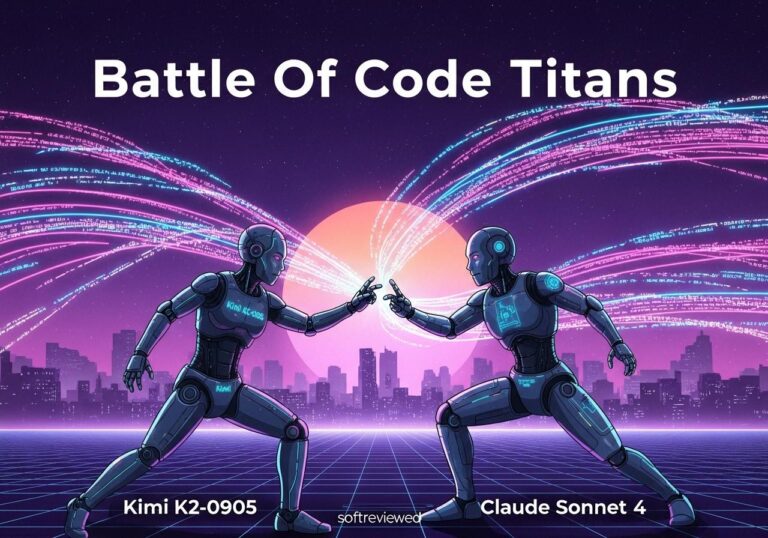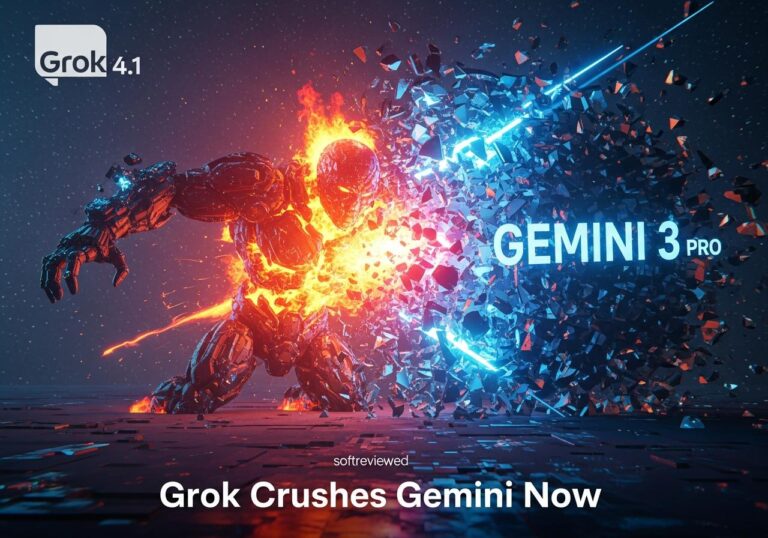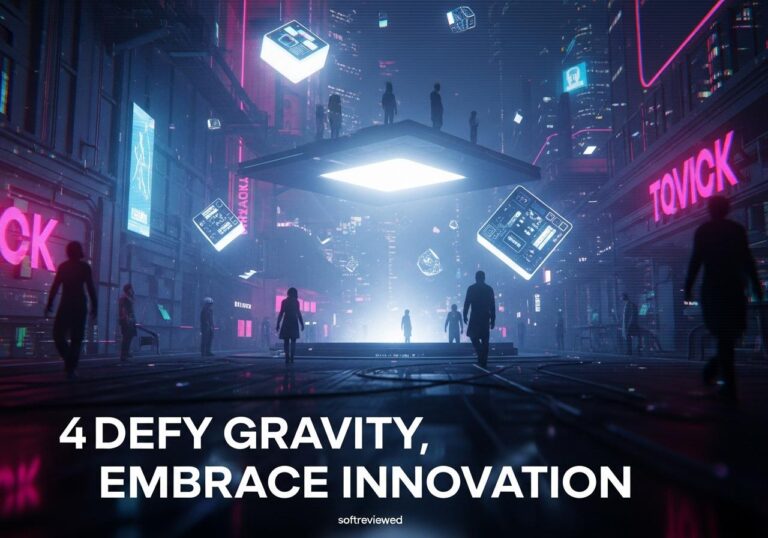Kimi K2 vs Claude Sonnet 4: AI Coding Assistant Comparison
A comprehensive analysis of cost, performance, and capabilities between two leading AI coding assistants
💰 Cost Efficiency: Kimi K2 Delivers 90% Less Expense
Kimi K2 costs approximately $0.53 for the same workload that Claude Sonnet 4 charges $5 for, making it significantly more budget-friendly for large-scale coding projects.
⚡ Speed Performance: Claude Sonnet 4 Dominates in Execution
Claude Sonnet 4 completes most coding tasks in 5-7 minutes with fastest output speeds, while Kimi K2 is notably slower and sometimes gets stuck during processing.
✨ Code Quality: Mixed Results with Slight Edge to Kimi K2
Kimi K2 produces slightly cleaner implementation quality and more accurate code responses, particularly excelling in frontend and UI development compared to Claude Sonnet 4.
🔄 Reliability Factor: Claude Sonnet 4 Wins in Consistency
Claude Sonnet 4 provides the most complete and reliable implementations across all coding tests, while Kimi K2 occasionally produces non-functional code.
📄 Context Capacity: Claude Sonnet 4 Offers 4x More Context
Claude Sonnet 4 supports 1000k tokens (1500 A4 pages) compared to Kimi K2’s 256k tokens (384 A4 pages), providing significantly more context for complex projects.
🖼️ Feature Advantage: Claude Sonnet 4 Includes Image Processing
Claude Sonnet 4 supports image input capabilities while Kimi K2 does not, offering additional versatility for multimodal coding tasks.
Breaking News: Open Source AI Model Challenges Tech Giants
Moonshot AI has released Kimi K2-0905, an open-source artificial intelligence model that's causing waves in the developer community by offering performance comparable to Claude Sonnet 4 at dramatically lower costs. This latest version significantly improves upon its predecessor with enhanced coding capabilities, extended context windows, and refined tool-calling features that make it particularly attractive for developers and businesses looking to reduce AI expenses without sacrificing quality.
The timing couldn't be better for cost-conscious developers and companies. With AI costs continuing to climb and usage restrictions becoming more common on premium models, Kimi K2-0905 arrives as a breath of fresh air, offering enterprise-grade capabilities through multiple API providers at prices that make advanced AI accessible to startups and individual developers alike.
Technical Powerhouse Built for Real-World Applications

Kimi K2-0905 operates on a sophisticated Mixture-of-Experts (MoE) architecture that cleverly balances performance with efficiency. The model contains a massive 1 trillion total parameters, but only activates 32 billion per token, resulting in faster inference times and lower computational costs compared to traditional dense models of similar capability.
Core Specifications That Matter
The technical foundation of Kimi K2-0905 demonstrates Moonshot AI's commitment to practical performance:
Architecture Details:
- 📌 1 trillion total parameters with 32 billion active per forward pass
- ✅ 384 experts total, with 8 selected per token for optimal efficiency
- 📌 61 transformer layers plus 1 dense layer for enhanced processing
- ✅ 64 attention heads using Multi-head Latent Attention (MLA)
- 📌 160,000 token vocabulary for comprehensive language understanding
The model's 256,000 token context window represents a significant upgrade from the previous 128,000 tokens, allowing developers to process entire codebases, lengthy documents, or extended conversations without losing context. This expanded capacity proves particularly valuable for complex coding projects and comprehensive document analysis.
Revolutionary MuonClip Optimizer Technology
One of Kimi K2-0905's most impressive technical achievements lies in its training methodology. Moonshot AI developed the MuonClip optimizer, which solved critical stability issues that typically plague large-scale model training. This innovation enabled the team to train their trillion-parameter model on 15.5 trillion tokens with zero training crashes or instabilities.
The MuonClip system uses a technique called "qk-clipping" that rescales query and key weight matrices after each optimizer step, preventing the attention logits from spiraling out of control during training. This breakthrough could potentially reduce training costs industry-wide by eliminating expensive training failures and restart requirements.
Performance Benchmarks Show Competitive Edge
Independent testing reveals that Kimi K2-0905 performs remarkably well across industry-standard benchmarks, often matching or exceeding more expensive proprietary models.
Coding Performance Analysis
The model demonstrates particular strength in software engineering tasks:
SWE-bench Verified Results:
- ✅ Kimi K2-0905: 69.2% accuracy
- ✅ Claude Sonnet 4: 72.7% accuracy
- ✅ DeepSeek V3.1: 66.0% accuracy
LiveCodeBench Performance:
- ✅ Kimi K2-0905: 53.7% Pass@1 rate
- ✅ Claude Sonnet 4: 48.5% accuracy
- ⛔️ Notable performance gap closing in practical coding scenarios
Real-World Application Success Stories
Developers report impressive results using Kimi K2-0905 for complex projects. Frontend development tasks show particular improvement, with the model generating more aesthetic and functional web interfaces, complete with advanced features like particle systems and 3D scenes. The enhanced tool-calling capabilities enable seamless integration with various APIs and development frameworks.
Community feedback highlights the model's ability to maintain coherence across lengthy coding sessions, understand project architecture across multiple files, and provide contextually appropriate suggestions that account for existing codebase patterns.
Cost Analysis: Dramatic Savings Without Sacrifice
The financial advantage of Kimi K2-0905 becomes immediately apparent when comparing operational costs with Claude Sonnet 4.
Pricing Breakdown Comparison
Kimi K2-0905 Costs:
- 📌 Input tokens: $0.15 per million (₹12.50 per million)
- 📌 Output tokens: $2.50 per million (₹210 per million)
- ✅ 256,000 token context window included
Claude Sonnet 4 Costs:
- ⛔️ Input tokens: $3.00 per million (₹250 per million)
- ⛔️ Output tokens: $15.00 per million (₹1,250 per million)
- ⛔️ Premium pricing for extended context (above 200K tokens)
Real-World Cost Scenarios
A developer recently tested both models on identical coding tasks totaling approximately 300,000 tokens. The cost breakdown revealed:
- Claude Sonnet 4: $5.00 total cost
- Kimi K2-0905: $0.53 total cost
This represents a 90% cost reduction while maintaining comparable code quality and functionality. For businesses processing millions of tokens monthly, these savings can amount to thousands of dollars in operational cost reductions.
Accessibility and Integration Options
Unlike proprietary models that lock users into specific ecosystems, Kimi K2-0905 offers multiple access methods to suit different technical requirements and budgets.
API Provider Ecosystem
Major Providers Supporting Kimi K2-0905:
- ➡️ OpenRouter: Competitive pricing with free tier availability
- ➡️ Groq: Ultra-fast inference at ~349 tokens per second
- ➡️ Together AI: Reliable service with enterprise features
- ➡️ Fireworks: Optimized for production deployments
- ➡️ Direct Moonshot Platform: Official API with full feature access
Local Deployment Capabilities
For organizations requiring complete data control, Kimi K2-0905 supports local deployment through popular inference frameworks including vLLM, SGLang, KTransformers, and TensorRT-LLM. However, local deployment requires significant hardware resources, typically necessitating multiple high-end GPUs for optimal performance.
The model's block-FP8 format optimization reduces memory requirements compared to traditional deployment methods, making it more accessible for organizations with moderate hardware budgets.
Enhanced Tool-Calling and Agentic Capabilities
Kimi K2-0905 excels in autonomous task execution and tool integration, capabilities that prove essential for modern AI applications requiring interaction with external systems and APIs.
Advanced Agent Workflows
The model demonstrates sophisticated understanding of multi-step processes, automatically breaking down complex requests into executable components. Users report success rates exceeding 95% for well-structured tool schemas, with consistent JSON output formatting that reduces integration errors.
Tool-Calling Improvements:
- 📌 Enhanced error handling and recovery mechanisms
- ✅ Better integration with workflow automation platforms
- 📌 Improved understanding of API documentation and constraints
- ✅ More reliable execution of chained tool sequences
Frontend Development Excellence
The September 2024 update specifically targeted frontend development capabilities, resulting in noticeably improved HTML, CSS, and JavaScript generation. The model now produces more visually appealing interfaces with better responsive design implementation and modern web development best practices.
Limitations and Considerations
While Kimi K2-0905 offers impressive capabilities, understanding its current limitations helps set appropriate expectations for different use cases.
Performance Trade-offs
Speed Considerations:
- ⛔️ Output generation: ~34 tokens per second (varies by provider)
- ✅ Claude Sonnet 4 comparison: ~91 tokens per second
- 📌 Groq deployment offers significantly faster inference speeds
Current Feature Gaps:
- ⛔️ No vision/image processing capabilities
- ⛔️ Limited reasoning mode options compared to premium models
- ⛔️ Potential hallucination issues in highly specialized domains
Resource Requirements
Local deployment demands substantial computational resources, making API access the practical choice for most users. Organizations considering self-hosting should budget for multiple H100 or H200 GPUs to achieve acceptable performance levels.
Strategic Advantages for Different User Types
The model's positioning creates distinct value propositions for various user segments in the development and business communities.
Startup and Small Business Benefits
Cost-sensitive organizations can leverage enterprise-grade AI capabilities without the financial burden typically associated with advanced language models. The open-source nature eliminates vendor lock-in concerns while providing flexibility for custom fine-tuning and specialized applications.
Enterprise Integration Opportunities
Large organizations benefit from the model's compatibility with existing development workflows and infrastructure. The extensive context window supports comprehensive document analysis and large-scale code review processes that previously required expensive premium models.
Individual Developer Advantages
Independent developers gain access to powerful AI assistance for complex coding projects without recurring subscription costs eating into project budgets. The model's strong performance in frontend development and tool integration makes it particularly valuable for full-stack development work.
Future Development Roadmap
Moonshot AI has indicated ongoing development plans that promise to expand Kimi K2-0905's capabilities beyond its current text-focused functionality.
While the current release maintains focus on text processing and coding tasks, the company has previously discussed adding vision capabilities and enhanced reasoning modes in future iterations. The rapid development cycle, evidenced by the quick progression from K2-0711 to K2-0905, suggests continued improvements and feature additions.
Making the Switch: Practical Implementation Guide
Organizations considering migration from Claude Sonnet 4 to Kimi K2-0905 should evaluate their specific use cases and requirements before making the transition.
Ideal Migration Scenarios:
- ✅ Cost optimization initiatives requiring significant budget reduction
- ✅ Long-context processing needs exceeding 200K tokens regularly
- ✅ Tool-heavy applications requiring extensive API integration
- ✅ Frontend development projects prioritizing aesthetic output quality
Situations Favoring Claude Sonnet 4:
- ⛔️ Applications requiring maximum inference speed
- ⛔️ Image processing and multimodal requirements
- ⛔️ Mission-critical applications where proven reliability outweighs cost savings
Smart Choice for Budget-Conscious Innovation
Kimi K2-0905 represents a significant milestone in democratizing access to advanced AI capabilities. By offering performance comparable to premium models at dramatically reduced costs, Moonshot AI has created compelling value for developers, startups, and enterprises seeking to implement sophisticated AI functionality without breaking budgets.
The model's strong performance in coding tasks, extended context handling, and reliable tool integration make it particularly suitable for modern development workflows that demand both capability and cost-effectiveness. While it may not match Claude Sonnet 4's raw speed or multimodal capabilities, the 90% cost reduction and open-source flexibility create compelling advantages for many use cases.
For organizations evaluating AI implementation strategies, Kimi K2-0905 offers an opportunity to experiment with advanced capabilities, build proof-of-concept applications, and scale AI integration initiatives without the financial constraints typically associated with premium language models. The availability through multiple API providers ensures reliable access while maintaining competitive pricing that makes long-term adoption financially sustainable.







